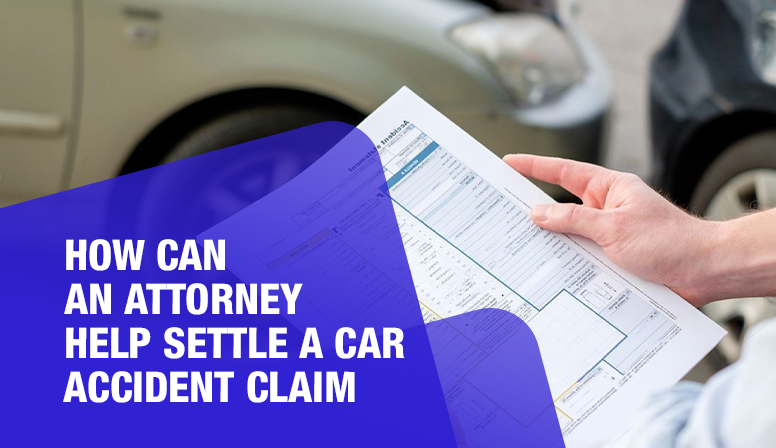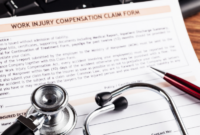How to File a Car Accident Claim with an Attorney’s Help is a crucial guide for anyone involved in a car accident. Navigating the legal and insurance complexities after such an event can be overwhelming, but understanding the process can significantly improve your chances of a fair settlement. This guide will walk you through each step, from the immediate aftermath of the accident to potentially resolving your claim through a trial, providing valuable insights and practical advice at every stage.
We’ll cover crucial aspects like documenting the accident scene, choosing the right legal representation, building a strong case, and understanding your insurance options.
This comprehensive approach ensures you are well-prepared to protect your rights and pursue the compensation you deserve. We aim to demystify the legal process, offering clear explanations and actionable steps to help you navigate this challenging situation with confidence.
Initial Steps After a Car Accident
Taking immediate and decisive action after a car accident is crucial for your safety, legal protection, and the successful pursuit of any subsequent claim. Proper documentation and information gathering are essential in building a strong case.
Immediate Actions After a Car Accident
Following a car accident, prioritize your safety and the safety of others. If anyone is injured, call emergency services (911) immediately. Even if injuries seem minor, seek medical attention to document any potential issues. Move your vehicle to a safe location if possible, avoiding further hazards.
Documenting the Accident Scene
Thorough documentation of the accident scene is vital. Take clear photographs and videos from multiple angles, capturing the damage to all vehicles involved, the surrounding environment, traffic signals, road markings, and any visible injuries. Ensure photos are well-lit and show license plates, vehicle damage details, and the overall context of the accident. Include timestamps on photos or videos if possible.
Gathering Information from Other Parties
Collect information from all involved parties, including drivers, passengers, and witnesses. Obtain their full names, addresses, phone numbers, email addresses, driver’s license numbers, insurance company names, and policy numbers. If possible, obtain witness statements detailing their observations of the accident. Note the direction of traffic flow, weather conditions, and anything else that may be relevant.
Reporting the Accident to the Police

Contact the police to report the accident, even if injuries appear minor. A police report serves as an official record of the incident, providing valuable evidence for your claim. Obtain a copy of the police report, including the report number and the officer’s contact information.
- Call the police and provide a clear description of the accident.
- Wait for the police to arrive at the scene and provide your statement.
- Obtain the police report number and request a copy of the report.
- Note the name and badge number of the responding officer.
Choosing and Hiring a Car Accident Attorney
Navigating the legal complexities of a car accident claim can be challenging. An experienced car accident attorney can significantly improve your chances of a favorable outcome by handling all aspects of your claim and maximizing your compensation.
Types of Legal Representation
Several types of legal representation are available for car accident claims. These include personal injury lawyers specializing in car accidents, general practice attorneys with experience in personal injury cases, and law firms dedicated to personal injury litigation. The choice depends on the complexity of the case and the specific needs of the client.
Selecting a Car Accident Attorney
When choosing an attorney, consider their experience in handling similar cases, their reputation within the legal community, their fees (including contingency fees, hourly rates, and any additional costs), and their communication style. Reviews and referrals from trusted sources can also be beneficial.
Questions to Ask Potential Attorneys, How to File a Car Accident Claim with an Attorney’s Help
Before hiring an attorney, schedule consultations to discuss your case and ask pertinent questions. A checklist of questions might include their experience with similar cases, their success rate, their fee structure, their communication process, and their strategy for handling your specific case.
Hiring an Attorney
Once you’ve selected an attorney, carefully review the attorney-client contract, ensuring you understand the fees, payment terms, and the scope of representation. Ask clarifying questions if anything is unclear before signing the agreement.
Building Your Case with an Attorney
Building a strong case involves meticulous evidence gathering and strategic negotiation with insurance companies. Your attorney plays a pivotal role in this process.
Gathering Evidence
Evidence supporting your claim includes medical records documenting injuries and treatment, the police report, photographs and videos of the accident scene, witness statements, and any other relevant documentation, such as repair estimates for vehicle damage. Your attorney will guide you through this process, ensuring all necessary evidence is collected and preserved.
Negotiating with Insurance Companies
Insurance companies often attempt to minimize payouts. Your attorney will negotiate with the at-fault driver’s insurance company to secure a fair settlement that reflects the full extent of your damages, including medical expenses, lost wages, pain and suffering, and property damage. They will handle all communication and negotiations on your behalf.
Attorney’s Role in Investigation
Your attorney will conduct a thorough investigation of the accident, gathering evidence, interviewing witnesses, and consulting with experts (such as accident reconstructionists or medical professionals) if necessary to strengthen your case and establish liability.
Filing a Claim
Your attorney will prepare and file a formal claim with the at-fault driver’s insurance company. This claim will Artikel the damages you’ve suffered and the basis for your demand for compensation. They will manage the entire claims process, from initial submission to final settlement or trial.
Understanding Insurance Claims and Settlements
Understanding the different types of insurance coverage and settlement options is crucial for a successful outcome. Your attorney can guide you through this complex process.
Types of Insurance Coverage
Several types of insurance coverage are relevant in car accidents. Liability insurance covers damages caused by the at-fault driver. Collision insurance covers damage to your own vehicle, regardless of fault. Uninsured/underinsured motorist coverage protects you if the at-fault driver is uninsured or underinsured. Personal injury protection (PIP) covers medical expenses and lost wages, regardless of fault (in states with no-fault insurance systems).
Submitting a Claim to Your Insurance Company
If you have collision coverage, you can file a claim with your own insurance company to cover the damage to your vehicle. Your attorney will help you navigate this process and ensure you receive the proper compensation.
Settlement Options
Settlement options typically include lump-sum payments (a single payment for the entire settlement) and structured settlements (payments made over time). The best option depends on your individual circumstances and financial needs. Your attorney will advise you on the most advantageous option.
Settlement vs. Trial
The decision to accept a settlement or proceed to trial involves careful consideration of various factors. The following table compares the pros and cons:
| Feature | Settlement | Trial |
|---|---|---|
| Cost | Generally lower legal costs | Potentially higher legal costs |
| Time | Faster resolution | Lengthier process |
| Certainty | Guaranteed amount (though potentially less than a trial verdict) | Uncertain outcome; potential for higher or lower award |
| Control | Less control over the outcome | Greater control over the presentation of evidence and arguments |
Potential Legal Challenges and Next Steps: How To File A Car Accident Claim With An Attorney’s Help
The claims process may encounter several challenges, requiring legal expertise to overcome.
Legal Challenges
Potential challenges include disputes over liability, disagreements on the extent of damages, difficulties in obtaining sufficient evidence, and challenges in proving causation between the accident and the injuries sustained. Insurance companies may employ various tactics to minimize payouts.
Going to Trial
If a settlement cannot be reached, the case may proceed to trial. The decision to go to trial depends on factors such as the strength of evidence, the potential for a favorable verdict, the costs associated with trial, and the client’s risk tolerance.
Appealing a Court Decision

If the court’s decision is unfavorable, an appeal may be possible. This involves filing a formal appeal with a higher court, arguing that legal errors were made during the trial. Your attorney will advise you on the viability of an appeal.
Importance of Legal Representation

Legal representation is crucial in maximizing compensation in cases involving serious injuries, multiple parties, complex liability issues, significant damages, or disputes with insurance companies. An attorney ensures your rights are protected and your interests are represented effectively.
Illustrative Examples of Successful Cases
Successful outcomes vary widely depending on the specifics of each case. Here are two examples illustrating different scenarios.
Case 1: Straightforward Settlement
- Injuries: Minor whiplash, requiring physical therapy for several weeks.
- Legal Strategy: Clear liability, straightforward medical documentation, and prompt negotiation with the insurance company.
- Outcome: Settlement reached quickly, covering medical expenses and lost wages.
Case 2: Complex Legal Challenges
- Injuries: Severe traumatic brain injury, requiring extensive medical treatment and long-term care.
- Legal Strategy: Detailed investigation, expert witness testimony (neurologist, economist), and aggressive litigation to establish liability and quantify damages.
- Outcome: Significant settlement after a protracted legal battle, covering medical expenses, lost wages, pain and suffering, and future care costs.
Serious Injury Case Example
A scenario involving a serious injury requiring extensive medical treatment would necessitate a strong case built on thorough documentation. This includes detailed medical records from various specialists, comprehensive rehabilitation records, expert witness testimony, evidence of lost wages, and a clear demonstration of the link between the accident and the sustained injuries. The attorney would work to establish liability, quantify all damages, and negotiate a settlement that reflects the long-term impact of the injury on the client’s life.
Successfully navigating a car accident claim with the help of an attorney requires careful planning and execution. From the initial moments after the accident to the potential conclusion in court, each step is crucial. By diligently documenting the accident, selecting a competent attorney, and effectively presenting your case, you significantly increase your chances of receiving a fair settlement. Remember, seeking legal counsel early on can greatly enhance your position and protect your rights throughout the process.
While the journey may be complex, understanding the steps involved and having the right support can make all the difference in achieving a positive outcome.
FAQ Explained
What if I can’t afford an attorney?
Many attorneys offer free consultations and work on a contingency fee basis, meaning they only get paid if you win your case. Legal aid societies and other non-profit organizations also provide assistance to those who qualify.
How long does the claims process typically take?
The timeframe varies greatly depending on the complexity of the case, insurance company responsiveness, and whether a settlement is reached or a trial is necessary. It can range from a few months to several years.
What types of damages can I claim?
Damages can include medical expenses, lost wages, pain and suffering, property damage, and more. The specific types and amounts will depend on the circumstances of the accident and the severity of your injuries.
What if the other driver doesn’t have insurance?
Your own uninsured/underinsured motorist coverage (UM/UIM) may help cover your losses. It’s crucial to review your policy and speak with your attorney about this possibility.

